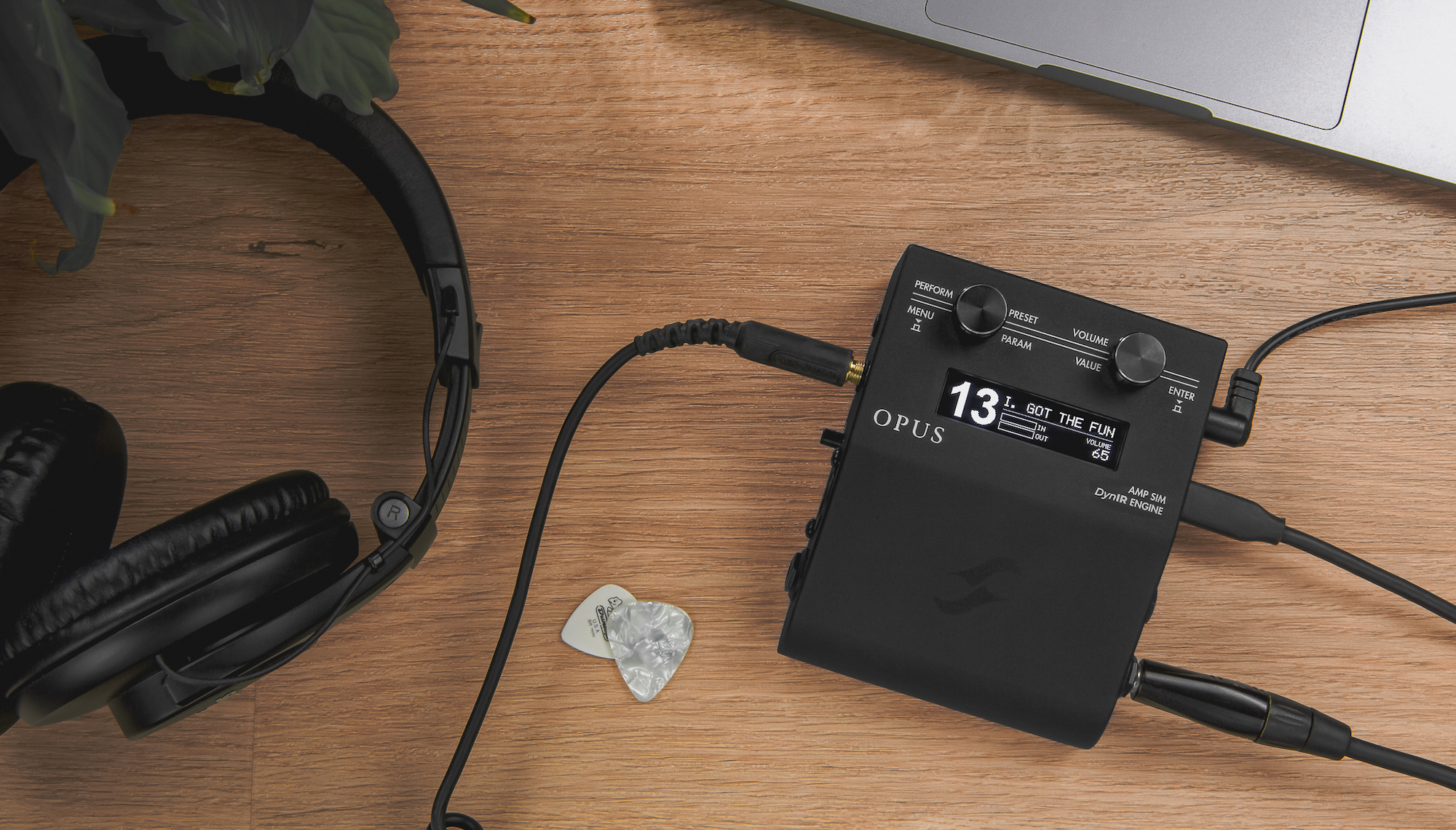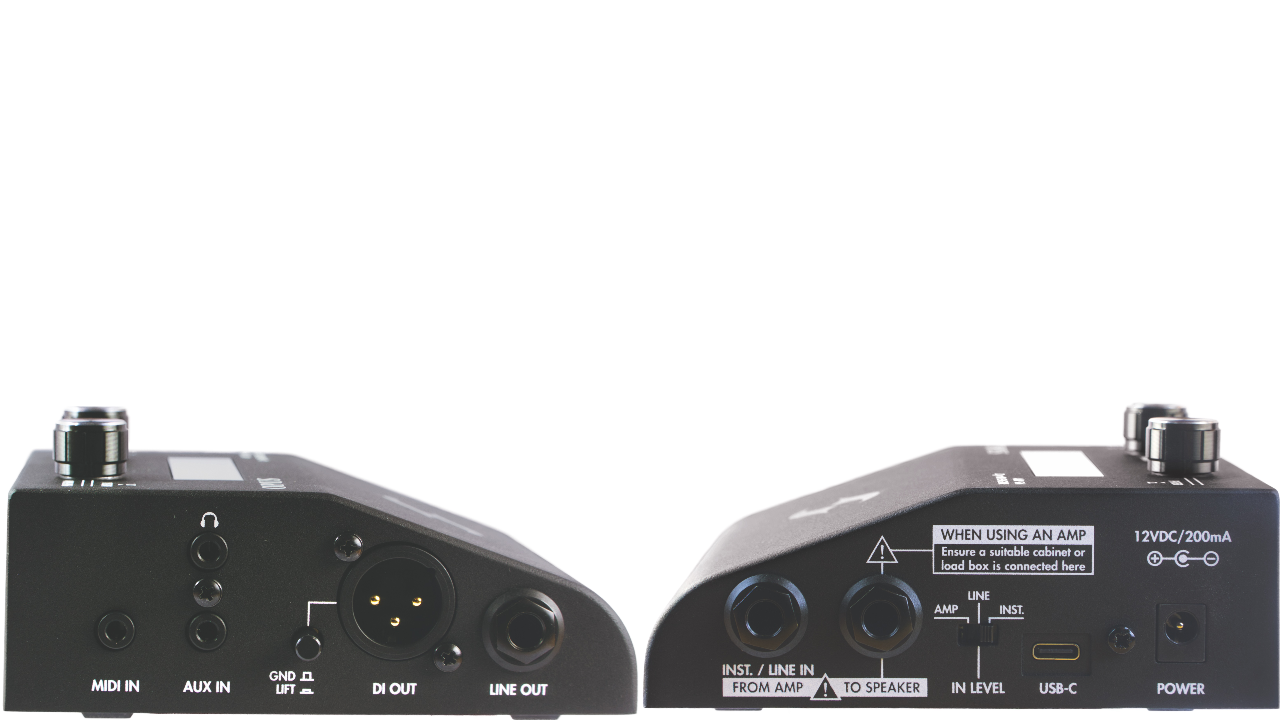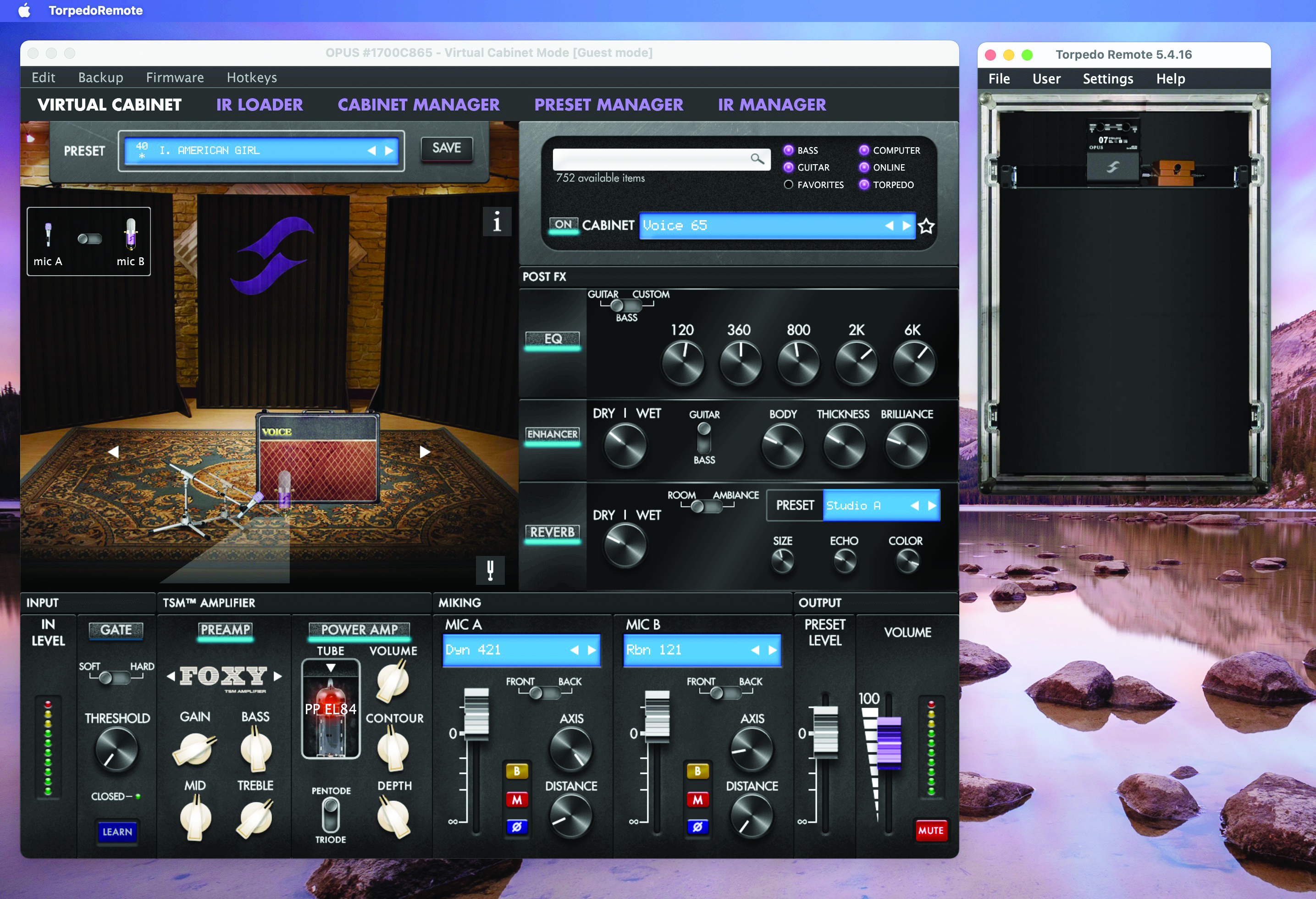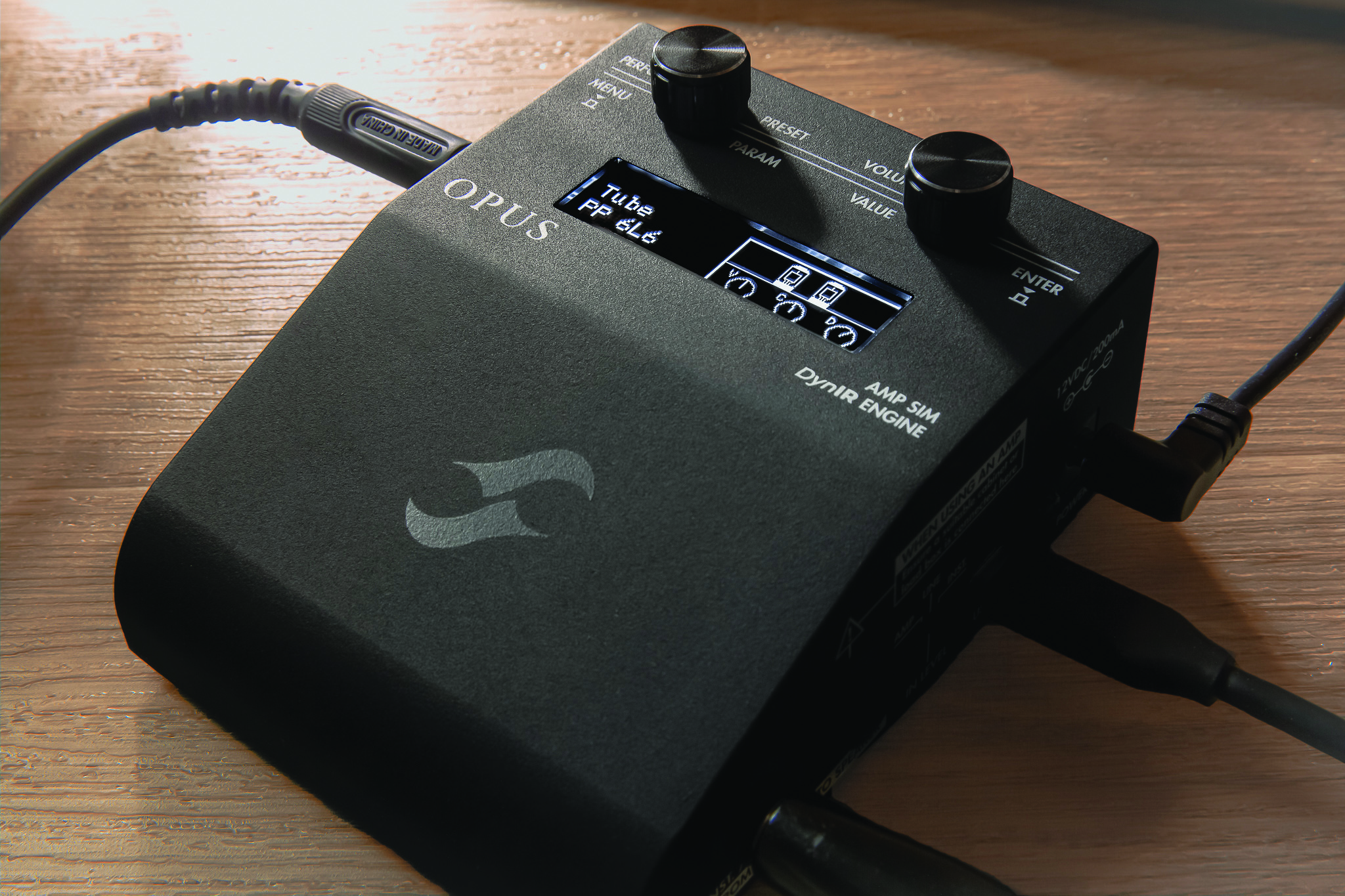“The Opus might not displace your Helix, Fractal, Kemper or Quad Cortex, but it offers a lot of good-sounding emulation in a compact and usable package at a fraction of the price”: Two Notes Opus Amp Sim and IR Loader Unit review
There’s a lot of sound and even more flexibility in this little box, and it should prove to be exactly what many guitarists are looking for

French gear maker Two Notes has been a popular name in speaker-cabinet simulators and load boxes for several years now and recently decided to move its efforts in the modeling market further forward in the signal chain. The company dipped a toe in these competitor-infested waters in 2022 with the ReVolt, a three-channel analog amp sim/preamp with cab-IR back end.
Now, it’s delivering the compact and extremely affordable Opus, a fully digital device in a rugged sandwich-sized box that converts your traditional pedalboard into a full rig, all without taking up more than a single pedal’s worth of space.
Two Notes’ full moniker for this little black wedge is “Multi-channel amp sim, DynIR engine, amp DI, IR loader, and silent stage solution featuring all-new pre- & power-amp tube-stage modeling (TSM).” It’s wordy, but it’s also a nutshell description of everything Opus can do.
The heart of the story, though, is that Opus brings together 10 preamps (five recently added as free firmware updates) and an array of digital amp sims that cover virtually all tonal needs, in front of its long-standing prowess with IR-based cab sims. Add your favorite drive pedals in front, connect to a recording interface or house sound/monitor, and you’re there.
A quick glance at Opus might make that bundle of tricks seem challenging for a compact box with just two knobs, a narrow LED screen and no foot switches. Opus provides access to 99 presets via the preset/parameter encoder knob on the left, while the volume/value encoder on the right output controls level. And although you could tweak everything on offer via those knobs while squinting at the LED screen, you probably wouldn’t enjoy doing so for long.

To get the most out of the Opus, you obviously need to bring in MIDI switching
and connect it to Two Notes’ Torpedo Remote for Opus software via smartphone, tablet, or desktop. The latter is particularly integral to maximizing the unit’s potential, allowing access to every parameter within the hardware’s DSP to fully craft your own amp, cab, and processing presets.
Given its relatively sparse real estate, Opus offers a surprisingly bountiful range
of connectivity. The right side of the pedal includes the ¼-inch input for instrument, line or amp, the latter of which is only usable in conjunction with the ¼-inch To Speaker output that follows it, since the Opus does not contain a speaker load. Using it as such, though, lets you use the device with amp sims disabled and speaker sims activated to send your cab of choice to a mixer for recording or live use.
All the latest guitar news, interviews, lessons, reviews, deals and more, direct to your inbox!
A USB-C connection and 12-volt DC power input (power supply included) round out the hookups on this side. The left side of the unit carries a ¼-inch line out, XLR DI output with ground-lift switch, and three 1/8-inch TRS jacks for headphones, aux in, and MIDI in (a DIN-to-1/8-inch converter is included).
Add it all up and it speaks to the versatility of this little box. As other makers have found within the amp-modeling and cab-sim realms, not all players want an end-to-end solution from these things and often like to integrate elements of their existing analog rigs into a digital hub such as this.
This is to say, “amp input to cab output to studio effects” is all here if you want a totally in-the-box signal chain, but the clever array of inputs and outputs allows you to fold in a traditional tube amp, individual pedals, and/or a wide range of back-end amplification and modeling solutions.

The Two Notes Torpedo Remote for Opus software is itself easy to use and largely very intuitive. Those who have used previous versions to craft their cab sims for other Two Notes products will recognize the interface immediately; the new version mainly updates the look somewhat, while adding blocks in the lower-left portion of the window for independent preamp and power amp selection.
The same studio effects that have been available to the Torpedo cab-sim products for some time – parametric EQ, enhancer, and reverb – are still available in the post-cab stage, and there’s also a gate available in front of the preamp block.
Two Notes amp models available include Foundry (a.k.a. Fender), Albion (Marshall), Foxy (Vox), Nifty Fifty (Mesa/Boogie-esque high-gain) and Peggy (an Ampeg sim for bass). Within each of these, though, the classic preamp architecture can be mixed with any output-stage available to the others, including both push-pull and single-ended 6L6, EL34, EL84, and KT88.
The cabinet selections are much more extensive, this being Two Notes’ forte, and include all the classic variations of single- and multi-speaker cabs from Fender, Marshall, Vox, Mesa/Boogie, Bogner, and many others.
I tested the Opus with a Fender Telecaster and a Gibson ES-355 direct into headphones, into a Universal Audio Apollo Twin Duo recording interface with headphones and Mackie HR824 home-studio monitors, and into a Fender Tone King FR10-powered cab. I didn’t connect a tube amp to it to use the Opus’s cab-sim block alone, having recently tested that function in my review of the Torpedo Captor X LE, but I explored most other uses thoroughly.

Although the amp simulations might appear rather limited, they deliver a good range of the classic tones, and generally do them all with admirable authenticity, while offering the mix-and-matchability to craft myriad original tones. From scooped, shimmering American cleans to edgier British chime, chunky Plexi crunch and sizzling West Coast shred – there’s a little of everything you might need in here.
And if none of it, arguably, perfectly apes the vintage classics right out of the gate in the way the presets from the bigger names in the modeling sector aim to do, it’s still a lot to work with. Put another way, the Opus might not displace your Helix, Fractal, Kemper, or Quad Cortex unit, but it offers a lot of good-sounding emulation in a compact and very usable package at a fraction of the price.
The plethora of great-sounding cab IRs available (plus easy loading of third-party
IRs you acquire or create) expands the tone-crafting exponentially. And while perhaps the Opus’s EQ, enhancer and reverb should be looked at as processors inserted in a mixer channel rather than effects, they are extremely useful.
Deeper effects usage will require connection to your own delay and modulation units, as will instant access to gradations of overdrive beyond the amp currently dialed in (a TS10 Tube Screamer, JHS Angry Charlie, and Victory Duchess all worked well here), but that’s the point of the Opus in the first place: seamless integration with most anything you already dig using.
I should add that Opus’s headphone output wasn’t optimal for my Sennheiser HD560s, which have an impedance of 120Ω (Two Notes recommends phones with an impedance between 25Ω and 80Ω). If your cans fall outside that range, note that Opus sounded much better into my Sennheisers through my UAD interface and all the other final-amplification hardware I used, making for a viable workaround.
All in all, there’s a lot of sound and even more flexibility in this little box, and it should prove to be exactly what many guitarists are looking for.
Specifications
Two Notes Opus Amp Sim and IR Loader Unit
Contact Two Notes Audio Engineering
Price $299 street
Controls Preset/param/menu knob, volume/value/enter knob
Connections Inst/line/amp input, speaker output, USB-C connection, 12VDC input (supply included), ¼” line out, XLR DI out with ground-lift switch, three 1/8” TRS jacks for headphones, aux In, and MIDI In (a DIN-to-1/8” converter is included)
Power 12VDC at 200mA, power supply included
Made China
Kudos A good-sounding and cleverly designed gateway to amp and cab modeling, at an extremely reasonable price
Concerns Headphone-output impedance range is somewhat narrow
Dave Hunter is a writer and consulting editor for Guitar Player magazine. His prolific output as author includes Fender 75 Years, The Guitar Amp Handbook, The British Amp Invasion, Ultimate Star Guitars, Guitar Effects Pedals, The Guitar Pickup Handbook, The Fender Telecaster and several other titles. Hunter is a former editor of The Guitar Magazine (UK), and a contributor to Vintage Guitar, Premier Guitar, The Connoisseur and other publications. A contributing essayist to the United States Library of Congress National Recording Preservation Board’s Permanent Archive, he lives in Kittery, ME, with his wife and their two children and fronts the bands A Different Engine and The Stereo Field.

